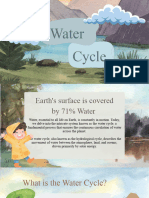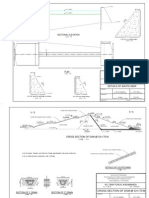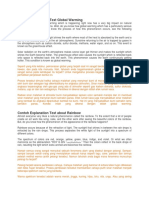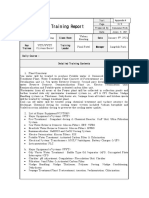0% found this document useful (0 votes)
37 views3 pagesWater Cycle Module
The water cycle is a continuous process that circulates water through the Earth's atmosphere, land, and oceans, involving key stages such as evaporation, transpiration, condensation, precipitation, infiltration, and runoff. This cycle is essential for regulating climate, supporting ecosystems, and providing freshwater, while human activities can significantly disrupt its natural balance. Understanding the water cycle emphasizes the importance of water conservation and environmental responsibility.
Uploaded by
tongquinCopyright
© © All Rights Reserved
We take content rights seriously. If you suspect this is your content, claim it here.
Available Formats
Download as DOCX, PDF, TXT or read online on Scribd
0% found this document useful (0 votes)
37 views3 pagesWater Cycle Module
The water cycle is a continuous process that circulates water through the Earth's atmosphere, land, and oceans, involving key stages such as evaporation, transpiration, condensation, precipitation, infiltration, and runoff. This cycle is essential for regulating climate, supporting ecosystems, and providing freshwater, while human activities can significantly disrupt its natural balance. Understanding the water cycle emphasizes the importance of water conservation and environmental responsibility.
Uploaded by
tongquinCopyright
© © All Rights Reserved
We take content rights seriously. If you suspect this is your content, claim it here.
Available Formats
Download as DOCX, PDF, TXT or read online on Scribd
/ 3







































































































